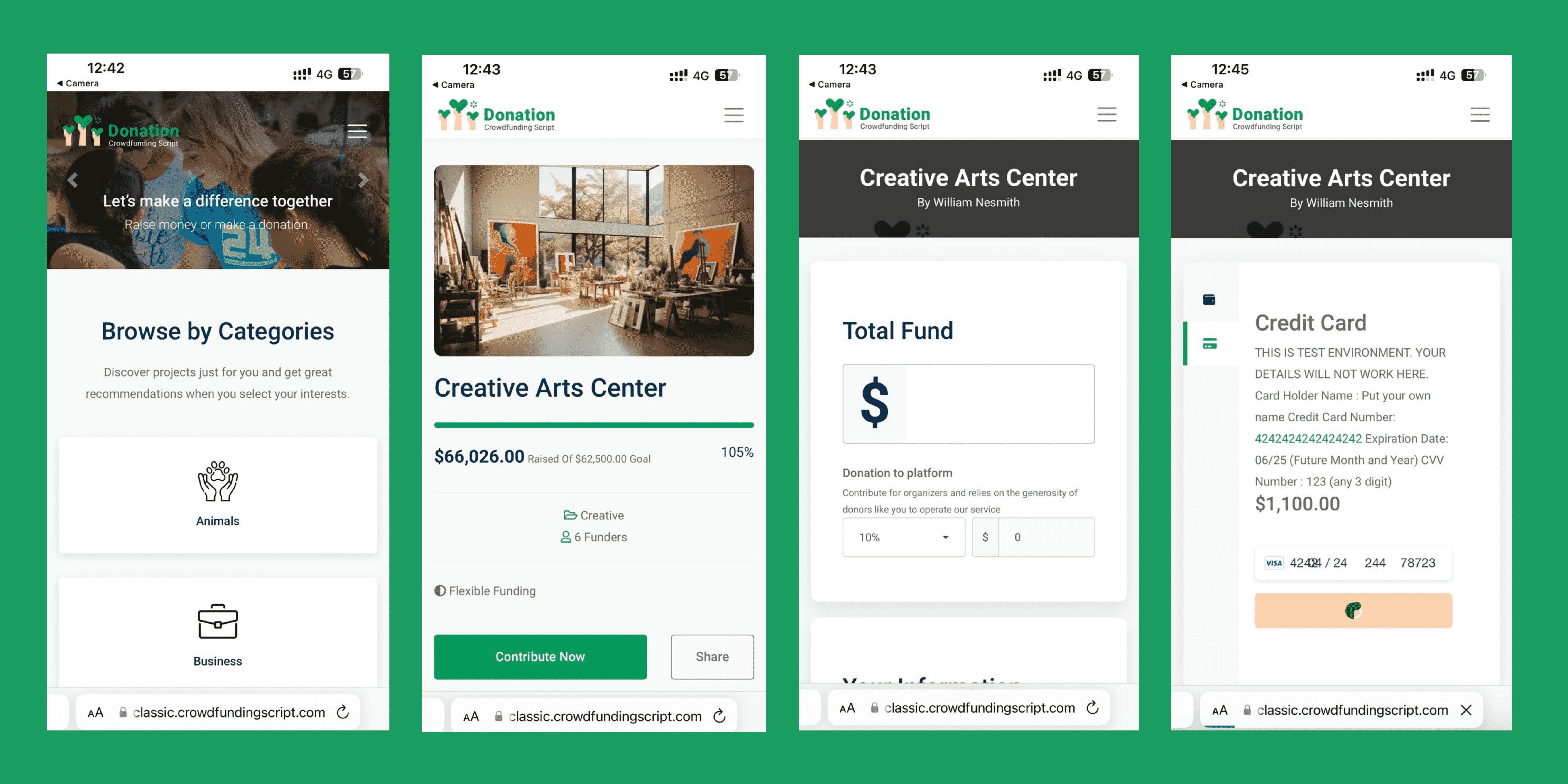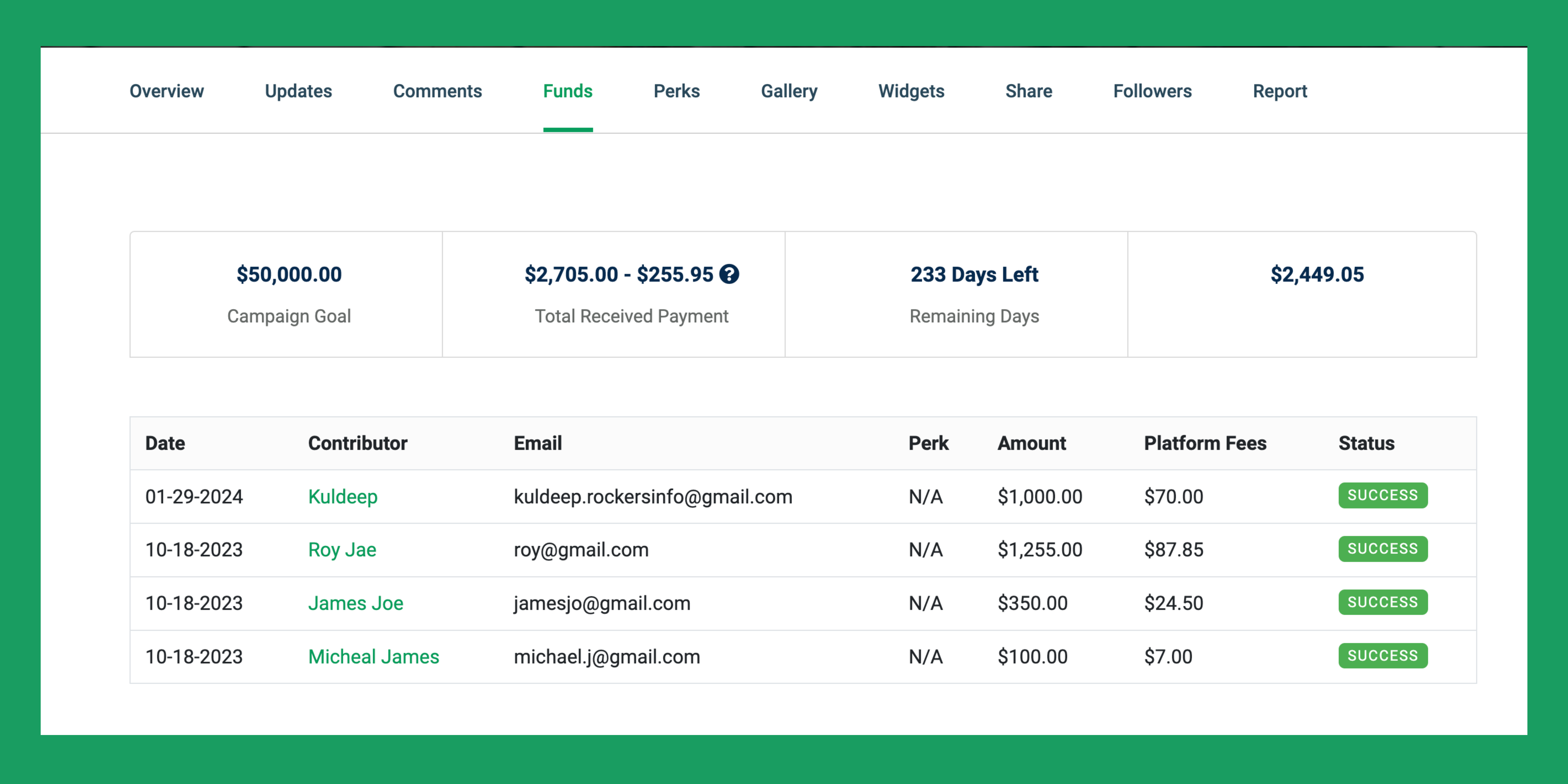
Fundraising is evolving rapidly with the growth of online donation platforms and crowdfunding software. As more people go online for charitable donations, these technologies are becoming critical tools for nonprofits, social enterprises, schools, churches and more to raise money. Recent years have seen an explosion of innovation in the donation software space with the integration of artificial intelligence, machine learning and mobile-responsive interfaces.
This article explores the key trends shaping the future of fundraising software and how organizations can leverage the latest advancements. We will look at how AI is enhancing campaign success rates, the rise of mobile-first donation platforms, the growing role of social influencers and more. The aim is to provide strategic insights so fundraisers can adopt cutting-edge techniques and boost fundraising outcomes.
The Surging Popularity of Donation Crowdfunding
Donation-based crowdfunding has become one of the most popular ways for nonprofits to raise money online. According to statistics, donation crowdfunding makes up almost 50% of the entire crowdfunding market. From 2013 to 2022, the volume of online donations received by nonprofits grew by an incredible 583%.
What’s driving this growth? Donation crowdfunding provides an easy and fast way for individuals to contribute to causes they care about. Platforms like GoFundMe, GiveSmart, Classy and Donorbox make it simple for nonprofits to create customized campaign pages to share on social media and collect donations. People can give either one-time or set up recurring monthly donations with just a few clicks.
The ease of donating online combined with supporters sharing campaigns across their networks is enabling nonprofits to rapidly hit fundraising goals. Donation software eliminates geographical limitations so causes can gain international reach. The pandemic also accelerated adoption of donation tools with in-person, cash-based fundraising restricted.
As more fundraising shifts online, donation platforms will consolidate their position as the future of charitable giving.
Integrating AI and Machine Learning to Boost Success
Artificial intelligence (AI) and machine learning are finding growing usage in fundraising software to increase donation conversion rates and meet goals quicker. Platforms are leveraging predictive analytics to provide campaigns with dynamic recommendations during the fundraising process.
Algorithms crunch data like the performance of campaign assets, types of messaging that triggers donations and a supporter’s probability to give based on past activity. Software then optimizes pages and sends personalized prompts to site visitors in real-time to encourage them to convert to donors. Things like displaying custom dollar amount suggestions, showing progress bars and triggering emails if someone exits without donating can lift conversion rates.
There are now AI writing tools that can even generate emotionally compelling donor-centric copy and landing page content. Robo writing uses natural language generation to customize messaging to different audience segments. It’s estimated that AI-optimized copy can outperform human-written content by up to 30% for conversion.
As predictive analytics and machine learning advance, they will become integral to maximizing donation campaign performance. Fundraisers can expect AI tools to continually test variations of copy, imagery, video and layout to determine what resonates most with their supporter base. Automated insights will enable teams to refine approaches week-by-week so they can consistently hit targets.
The Rise of Mobile-Responsive Donation Platforms
Recent years have marked a tipping point with mobile devices overtaking desktops for online activity. Over 60% of donations today are made on mobile phones. People are leveraging apps and mobile browsers while at home and on-the-go to contribute to fundraising campaigns.
Recognizing this shift, forward-thinking donation software providers are optimizing platforms with mobile-first design. Features include things like responsive templates that dynamically resize for all devices, easy touch payments, and SMS marketing to re-engage supporters.
Creating seamless user experiences for smartphones is mandatory to cater to modern donor expectations. Smooth mobile interfaces minimize friction which can boost recurring giving programs. Those using mobile to donate once are also more inclined to provide repeat donations over time when platforms maintain ease of use.
Additionally, having unified data and dashboards across web and mobile enables fundraisers to coordinate omni channel campaigns. Teams can retarget supporters with personalized messaging no matter the device which lifts donor lifetime value. Tracking analytics connected via APIs rather than in channel silos also gives greater visibility over what’s working best across channels.

As mobile continues to dominate user behavior, donation software focused on mobile-first experiences will pull ahead for user adoption and funds raised.
The Growing Influence of Social Media Influencers
The popularity of social media influencers presents a major opportunity for donation-based campaigns. Influencer marketing has become a $16 billion industry with a third of consumers relying on influencer recommendations for purchasing decisions.
Recognizing their sway, nonprofits are now collaborating with popular personalities to promote fundraising drives. Activists with an alignment in values are using their large followings on Instagram, TikTok, YouTube and more to spotlight causes and encourage donations.
Some advantages influencers provide include:
– Instant access to extensive, engaged networks. Top creators have email lists up to 100k+ subscribers and social followings in the millions. This built-in exposure can rapidly spread awareness about campaigns.
– Perceived trust and authenticity. Audiences view influencers as subject matter experts and have faith in their judgment. Explicit endorsement adds credibility which persuades followers to contribute.
– Viral content amplification. Creative viral content gets widely shared and keeps driving tractions long after initial posts go live. Nonprofits leverage this trickle effect for sustained momentum.
Tracking links integrated with donation platforms let influencers monitor referrals and dollars driven to campaigns. They can test Calls-to-Actions (CTAs), messaging styles and social content formats to optimize how much they raise.
In one example, environmental advocate Jack Harries steered £500k+ to charity: water through an Instagram fundraiser. As more creators realize their monetization potential for good, influencer charity partnerships will skyrocket. Their marketing firepower will become even more vital to donation campaign success.
Emergence of Gamified, Interactive Experiences
Donation platforms are incorporating gamification techniques to immerse site visitors and incentivize giving. More cinematic designs paired with interactive elements help spotlight meaningful impact to motivate contributions.
Examples of gamified experiences include:
- Progress trackers – Visually striking trackers highlight funds coming in minute-by-minute from across the world. The visualization amplifies the collective power of small donation amounts stacking up from many people to inspire visitors to join.

- Quests/Challenges – Sites are integrating quest interfaces where support amounts unlock new site content or trigger real-world activities tied to the cause. One campaign offered donors a virtual bike tour of their charity building upgrades for hitting milestones.
- Prizes/Rewards – People receive badges, points and virtual goods for referrals and repeat donations which taps into psychological reciprocation. Virtual goods become status symbols visible in public donor showcases.
- Augmented reality – Emerging campaigns blend digital effects onto real environments via smartphone cameras. People could snap selfies with virtual endangered animals saved based on money raised for example.
Interactivity turns giving into a journey rather than a singular transaction. Gamifying experiences boosts donor engagement as people return to check quest progress and claim new rewards. Average gift values often increase over time too.
Blending creativity, emotion and technology will define best-practice in donation campaign UX. Purposeful entertainment drives participation while conveying a charity’s meaningful community impact.
The Growing Popularity of Crypto Donations
Cryptocurrency has introduced new potential to tap into decentralized finance donations. Leading nonprofits from UNICEF to Save the Children have started accepting crypto contributions. This enables them to receive funds globally from those using digital coins.
Younger demographics are investing heavily into crypto assets, with 43% of millennial millionaires already owning them. Tapping into this emerging wealth segment could significantly expand donor pools. People also appreciate the transparency of blockchain transactions with clear tracing of public wallet addresses.
However, the extreme volatility of cryptocurrency valuations created barriers to adoption. Some aid groups cashed out crypto fast to avoid prices slumping before they could use funds.
To overcome problems, stable coin currencies like USDC and DAI have been introduced pegging values to fiat money. Donors contribute stable coins to lock-in set fiat amounts to charity irrespective of market swings. Conversion mechanisms can even provide automatic payouts so nonprofits receive bank transfers in currency denominations they desire.
This bridges the gap for risk-averse organizations to benefit from crypto donation upsides. As blockchain tools progress, decentralized applications may cut processing fees and speed up international transfers too.
Cryptocurrency integration signals the modernization of nonprofit payment systems for the Web 3.0 era. Those who trial crypto early will appeal to younger donors while future-proofing fundraising.
The Bottom Line
Donation crowdfunding software is undergoing rapid change led by emerging technologies like AI, mobile interfaces and cryptocurrency. As online channels cement themselves as the top way people discover and contribute to causes, purpose-built donation tools are becoming critical infrastructure.
Organizations must closely track digital fundraising innovation and be willing to pilot advancements that align with target audiences. Building highly personalized, interactive experiences fueled by data will be key differentiators.
- SEO Powered Content & PR Distribution. Get Amplified Today.
- PlatoData.Network Vertical Generative Ai. Empower Yourself. Access Here.
- PlatoAiStream. Web3 Intelligence. Knowledge Amplified. Access Here.
- PlatoESG. Carbon, CleanTech, Energy, Environment, Solar, Waste Management. Access Here.
- PlatoHealth. Biotech and Clinical Trials Intelligence. Access Here.
- Source: https://www.fundraisingscript.com/blog/trends-in-donation-crowdfunding-software/?utm_source=rss&utm_medium=rss&utm_campaign=trends-in-donation-crowdfunding-software



